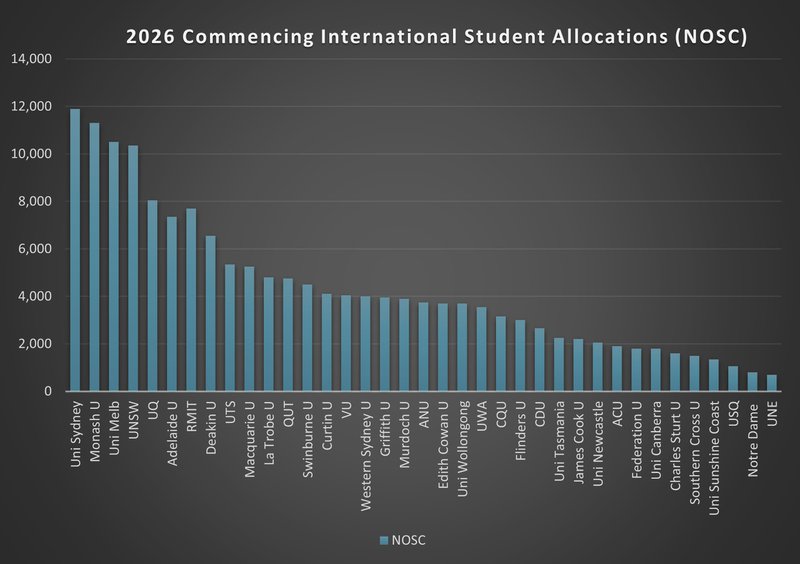
There will be 17,500 more international student starts next year than this, with growth spread across the public university system. With a notable exception. The University of Sydney remains the leader for commencing enrolments, but was denied the opportunity for growth – pegged at the same number as last year’s starts – 11,900.
Sydney tops the nation with the proportion of international students as part of their enrolments and just 35% of PG coursework students are domestic.
A statement by Education Minister Jason Clare and Junior Minister for International Education Julian Hill refers to one of 32 universities that requested growth not receiving additional places. “We are in further discussions with the remaining university about market diversification, south-east Asian engagement and its investment in new housing.”
“Universities that are building more accommodation have received increases to their international student allocations,” they added.
Coincidentally, a puff-piece about Uni Sydney hopes to construct more student housing ran in friendly media. But in contrast to it, neighbouring Uni New South Wales has a 9% hike to 10,350. Including its college, Monash U is up 6 % to 11,300. And Uni Melbourne can increase its first-year figures by 10% plus, to 10,500.
The Ministers say regional universities have the biggest proportional wins, “to share the benefits … more fairly and equally.” Charles Sturt U can grow from 1,000 this year to 1,600 next. Uni Newcastle can increase starts from 1,600 to 2,050. University of Canberra was crowing with a 20% increase in allocated places to 1,800.
The new Adelaide University, originally advocated by the South Australian government with the international market in mind, can grow by 8% on the combined 2025 places at founding institutions, the universities of Adelaide and South Australia. Five universities didn’t seek growth. Additional room in the Government’s cap is one thing – filling them is another.
In the lead-up to the election, international student numbers became a misplaced proxy for cutting migration to reduce housing shortages and Mr Clare still appears conscious of the issue, announcing, “we are making sure growth in international education happens in a way that supports the national interest and spreads benefits more evenly.”
Growth has been allocated to encourage source market diversity, with a particular focus on growing the proportion of students from south-east Asia.
But who decided which universities got what? The Department of Education states, “an independent panel evaluated the applications and made recommendations to government.” In the small world of international education entirely disinterested experts cannot have been easy to find.
